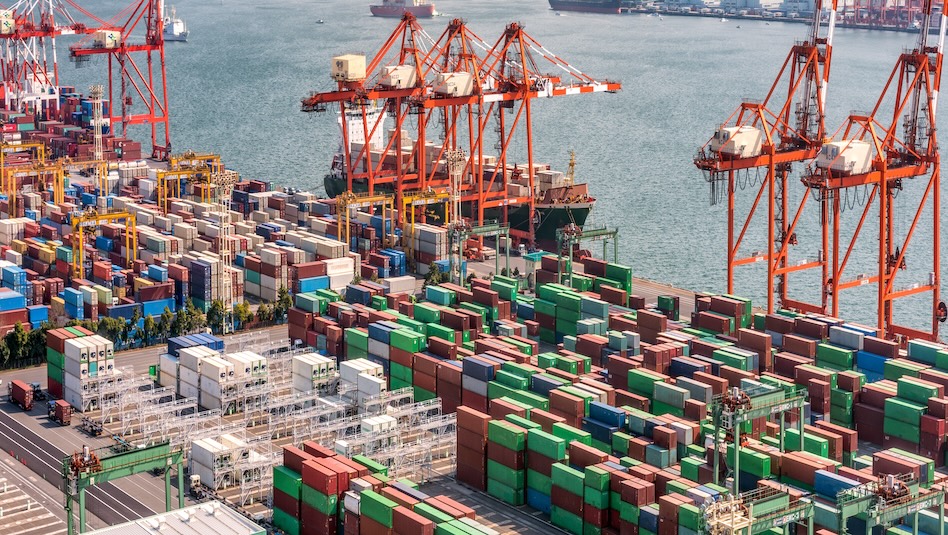




Monthly Economic Update: One for the road
 DOWNLOAD
DOWNLOAD

Inflation Update: Still low, still slow
 DOWNLOAD
DOWNLOAD

Philippines Trade Update: Exports momentum continues
 DOWNLOAD
DOWNLOAD


IMF cuts Philippine growth forecasts

The International Monetary Fund (IMF) slashed its gross domestic product (GDP) growth projections for the Philippines from this year to the next, reflecting heightened global uncertainty arising from US tariff policy.
In its latest World Economic Outlook (WEO), the IMF downgraded its GDP growth forecast for the Philippines to 5.5% this year from the 6.1% projection in its January update.
It also lowered its 2026 forecast to 5.8% from 6.3% previously.
These would fall below the government’s 6-8% growth targets for this year to 2026.
The IMF said its forecasts consider the weaker-than-anticipated Philippine growth in the fourth quarter, as well as external headwinds stemming from heightened trade tensions and policy uncertainty.
“Downward revisions to growth for 2025 and 2026 are observed throughout the region and globally, reflecting the recent external developments,” an IMF spokesperson said in an e-mail.
These include the “direct impact of higher tariffs on the Philippines’ goods exports to the US, downward revisions to trading partners’ growth, and impact of higher uncertainty and financial tightening,” it said.
US President Donald J. Trump on April 2 announced a barrage of reciprocal tariffs on nearly all of its trading partners, with a baseline rate of 10%.
While most of the higher reciprocal tariffs have been suspended until July, the baseline 10% tariff is still in effect.
The Philippines was slapped with a 17% tariff rate on its exports to the US, the second lowest in Southeast Asia.
The IMF said its WEO forecasts are based on information available as of April 4 and are subject to “significant uncertainty.”
However, the IMF said the Philippine economy is seen to remain somewhat resilient.
“Despite a more difficult environment, growth in the Philippines is expected to remain relatively robust in 2025,” it said.
The IMF’s forecast for the Philippines places it as the second-fastest growing economy in emerging and developing Asia this year, just behind India (6.2%).
The region is projected to grow by 4.5% this year and 4.6% in 2026, as Southeast Asian countries are among the most affected by the US tariffs.
In Southeast Asia, the Philippines has the fastest-projected GDP growth forecast this year. It is ahead of Vietnam (5.2%), Indonesia (4.7%), Malaysia (4.1%) and Thailand (1.8%).
“On the upside, recent legislative reforms could facilitate an accelerated implementation of domestic infrastructure projects, including through public-private partnerships, and lead to higher foreign direct investment (FDI) and investment,” the IMF said.
“In terms of growth drivers, domestic consumption remains the key driver for growth and is expected to be supported by lower inflation and low unemployment,” it added.
Meanwhile, the multilateral institution said it expects headline inflation in the Philippines to average 2.6% this year and 2.9% in 2026, well within the central bank’s 2-4% target band.
“Relative to January WEO, the headline inflation projection for 2025 has been revised down by 0.2 percentage point (ppt) to 2.6%.”
This reflects the “lower-than-expected inflation outturn in the first quarter, and downward revisions to global fuel and food price projections.”
The latest data from the local statistics agency showed inflation slowed to 1.8% in March, its slowest rate in nearly five years. This brought average inflation to 2.2% in the first quarter.
Accounting for risks, the central bank sees inflation averaging 2.3% in 2025 and 3.3% in 2026.
The IMF said risks to the inflation outlook are “broadly balanced.”
“On the upside, potential disruptions in global supply chains and trade restrictions can raise imported inflationary pressures, while risk-off shocks could contribute to currency depreciation.”
“The Philippines’ exposure to extreme climate events also poses additional inflationary risks. On the downside, risk of weaker global demand prospects could pose deflationary risks, including through lower commodity prices.”
Meanwhile, the IMF said the Bangko Sentral ng Pilipinas (BSP) has room to further lower interest rates and “firmly move to a neutral stance.”
“With inflation projected to remain around the BSP’s target of 3%, inflation expectations well-anchored, and amid an expected widening of the output gap, there is space for a more accommodative stance.”
The Monetary Board earlier this month resumed its rate-cutting cycle with a 25-basis-point (bp) rate cut, bringing the benchmark to 5.5%.
BSP Governor Eli M. Remolona, Jr. has said they will likely continue cutting rates further this year in “baby steps” or increments of 25 bps.
There are four more Monetary Board policy meetings this year, with the next slated for June 19.
“Amidst prevailing uncertainty and with both upside and downside risks to inflation, a data-dependent approach, and clear and effective communication around policy settings will be important to manage expectations and provide clarity on the BSP’s reaction function,” the IMF added.
‘Negative shock to growth’
Meanwhile, the IMF expects global growth to slow to 2.8% this year and to recover to 3% in 2026, reflecting “the direct effects of new trade measures and their indirect effects through trade linkage spillovers, heightened uncertainty, and deteriorating sentiment.”
The new forecasts are lower than the 3.3% projection for both years in the January WEO update.
Trade uncertainties have “surged to unprecedented levels,” the IMF said in the latest report.
“The swift escalation of trade tensions and extremely high levels of policy uncertainty are expected to have a significant impact on global economic activity,” it added.
The US is expected to grow by 1.8% this year, 0.9 percentage point lower than the previous projection “on account of greater policy uncertainty, trade tensions and softer demand momentum.”
“Tariffs are also expected to weigh on (US) growth in 2026, which is projected at 1.7% amid moderate private consumption,” the IMF said.
The IMF also lowered projections for Canada, Japan and the United Kingdom.
For China, it downgraded its growth outlook to 4% this year from 4.6% previously due to the impact of the US tariffs. It also lowered its 2026 China forecast to 4% from 4.5% previously.
The tariffs and consequent countermeasures alone are a “major negative shock to growth,” it added.
“The unpredictability with which these measures have been unfolding also has a negative impact on economic activity and the outlook and, at the same time, makes it more difficult than usual to make assumptions that would constitute a basis for an internally consistent and timely set of projections.”
Global inflation is also seen to ease at a slower pace than initially expected, the IMF said.
It also flagged “intensifying downside risks” on global output.
“Ratcheting up a trade war, along with even more elevated trade policy uncertainty, could further reduce near- and long-term growth, while eroded policy buffers weaken resilience to future shocks.”
“Divergent and rapidly shifting policy stances or deteriorating sentiment could trigger additional repricing of assets beyond what took place after the announcement of sweeping US tariffs on April 2 and sharp adjustments in foreign exchange rates and capital flows, especially for economies already facing debt distress.”
Moving forward, the IMF said there is a need for “clarity and coordination.”
“Countries should work constructively to promote a stable and predictable trade environment, facilitate debt restructuring, and address shared challenges.”
“At the same time, they should address domestic policy and structural imbalances, thereby ensuring their internal economic stability. This will help rebalance growth-inflation trade-offs, rebuild buffers, and reinvigorate medium-term growth prospects, as well as reduce global imbalances,” it added. – Luisa Maria Jacinta C. Jocson, Senior Reporter
This article originally appeared on bworldonline.com





 By BusinessWorld
By BusinessWorld